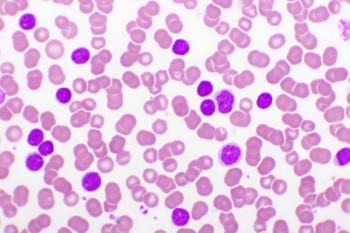
Researchers Detail Case of Statin-Induced Necrotizing Myositis
Immune-mediated necrotizing myopathy typically presents with progressive symmetrical proximal muscle weakness and myalgias, although some cases can present with respiratory and esophageal muscle weakness, as seen in this reported case study.
With statins carrying a risk of myopathy, researchers are sharing the details of a case report of a patient with statin-induced
A statin-induced necrotizing autoimmune myopathy (SINAM) diagnosis was made following further testing that showed scattered necrotic fibers with minimal perivascular inflammation. Even after discontinuing statin treatment the patient continued to experience muscle weakness and progressive dysphagia.
Based on their findings, the researchers explained, “Physicians should consider the onset of SINAM when patients treated with statins present with myalgias, proximal muscle weakness, and very high creatine phosphokinase levels even after chronic use of statins. Also, physicians should screen for antibodies against 3-hydroxy-3-methylglutaryl coenzyme Areductase and stop statin therapy immediately. Patients should be started on steroids, as the disease can progress even after discontinuation of the statins and can be debilitating if it involves respiratory muscles and esophageal muscles.”
In addition to steroids, management can include oral high-dose steroids and intravenous immunoglobulin and adjuvant therapies like methotrexate, azathioprine, and rituximab.
According to the researchers, immune-mediated necrotizing myopathy typically presents with progressive symmetrical proximal muscle weakness and myalgias, although some cases can present with respiratory and esophageal muscle weakness, as seen in the reported case study.
“Generally, SINAM is more prevalent in patients who are positive for the human leukocyte antigen-DR isotype. The type of statin used is also a factor, as lovastatin, simvastatin, and atorvastatin have more effects on muscles,” wrote the researchers. “Dose strength is another risk factor, as the higher dose of the statins is associated with a greater risk of muscle injury. As hepatic cytochrome P450 3A4 (CYP3A4) metabolizes statins, patients on other drugs that affect the metabolism of CYP3A4, like macrolides, azoles, cyclosporine, colchicine, calcium channel blockers, fibrates, and amiodarone, are more prone to SINAM.”
Reference
Ahmad A, Karam I, Baker DL. A rapidly debilitating myopathy: a rare case of statin-induced necrotizing myositis. Cureus. Published online July 10, 2021. doi:10.7759/cureus.16304
Newsletter
Stay ahead of policy, cost, and value—subscribe to AJMC for expert insights at the intersection of clinical care and health economics.












































